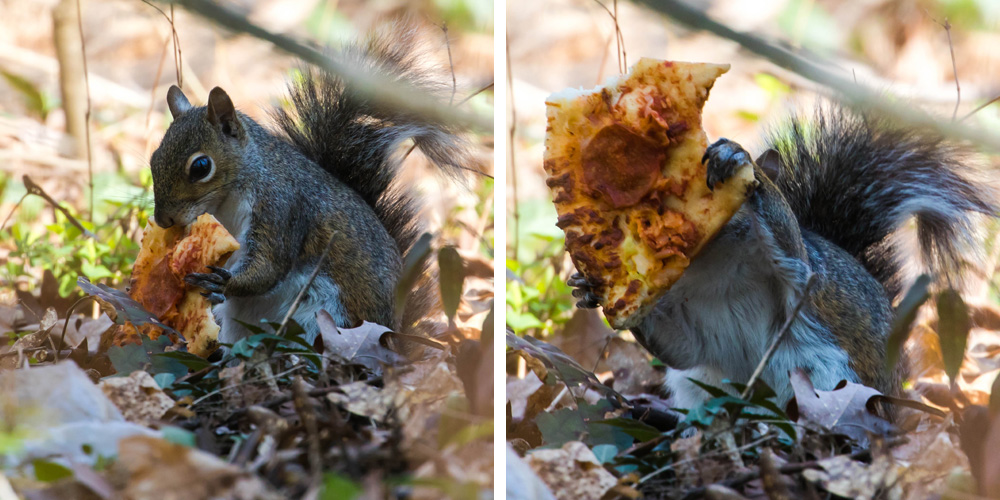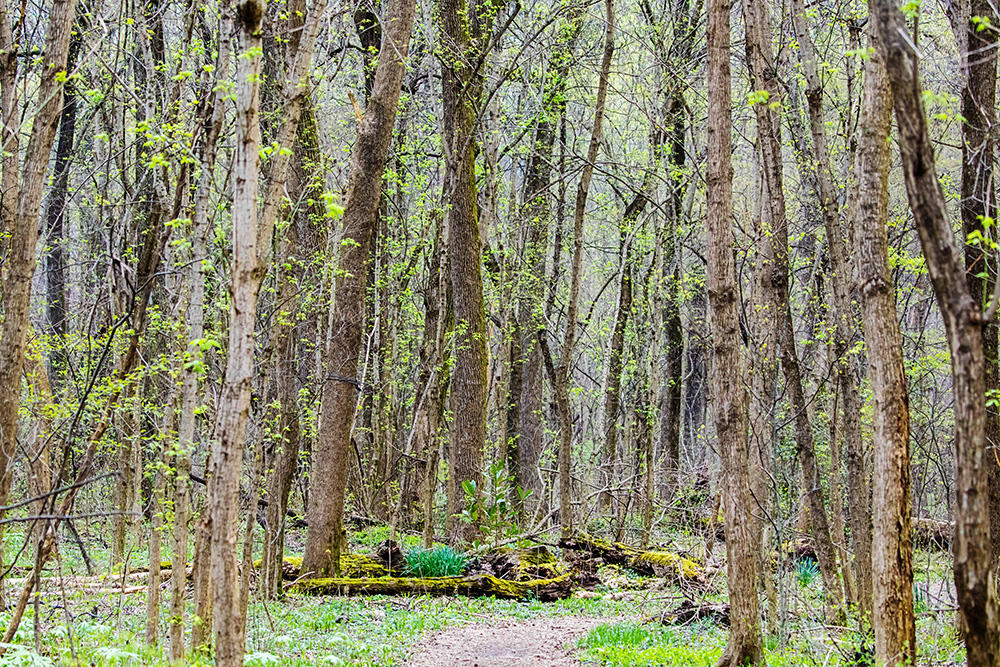NatureZen: Two Weeks of Too-Early Spring
words and photos by Melissa McMasters
Our fellow Tennessean Margaret Renkl wrote last week in the New York Times about the disconnect between the joy she felt at this year’s early-blooming wildflowers and the fear of what this too-soon spring would mean for the overall health of the ecosystem. I imagine that if you’ve walked in Overton Park’s Old Forest since late February, you’ve experienced this tension too: the thrill of seeing a celandine poppy opening itself up to the sun its flower evokes, coupled with the worry that by the time our migratory birds arrive, the trees will have all leafed out and their food sources will be greatly diminished.
This week, with freeze warnings nearly every day, I’m expecting to see the tender blooms of our forest wildflowers wilting, along with the numbers of pollinating insects who have arrived to drink from them. It’s not just mega-storms and heat waves where we feel the effects of climate change; it’s in the temperature swings that make spring, already such a precarious time for creatures like birds traversing thousands of miles, even more risky.
And yet our early spring has held many treasures, as spring always does. Come with me on a virtual walk through the last couple of weeks in the Old Forest to see what’s been happening.
If you took a walk in the woods during the week of February 20, chances are you inhaled quite a few American winter ants. These tiny flying creatures were having a major emergence from the underground colonies where they spend the winter, and thousands of them were covering every available surface. Every year when the weather first gets warm, these ants come out to mate, so what you were seeing that week was a forest full of twitterpated males, along with the occasional much larger and redder queen. As what I assume was a knock-on effect of this emergence, for the first time ever, I ran into a flock of Eastern bluebirds along the Old Forest Loop. Normally found in more open areas, these birds probably rushed in to take advantage of the ant buffet, and as the ants vanished, so did they.
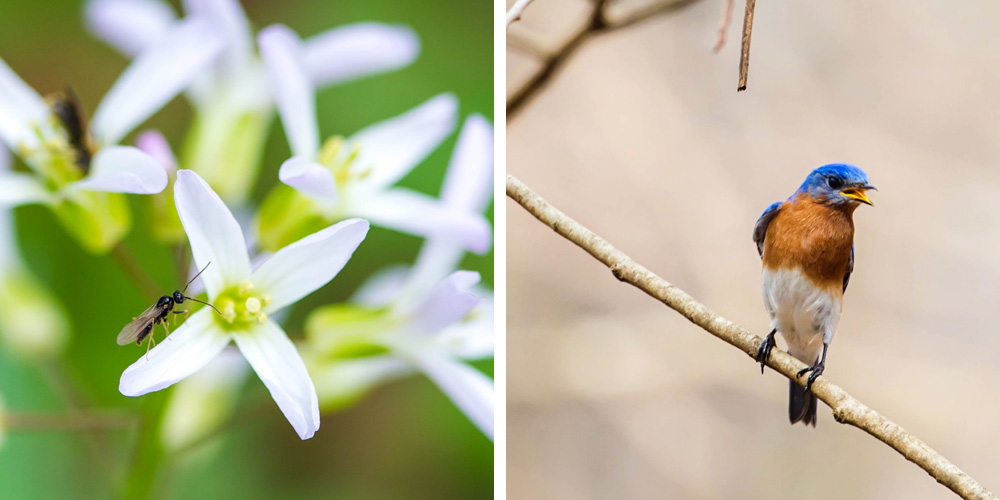
That same day, my co-worker Kim and I stopped to admire this azure butterfly, which was drawing nutrients from a bird dropping. With wings open, the iridescent blue inspiration for its name becomes apparent, but it’s a fast and flitty creature that typically only perches with wings closed. Our area has both spring and summer azures, but confusingly, the first brood of summer azures often emerges before the spring ones, so this could be either species!
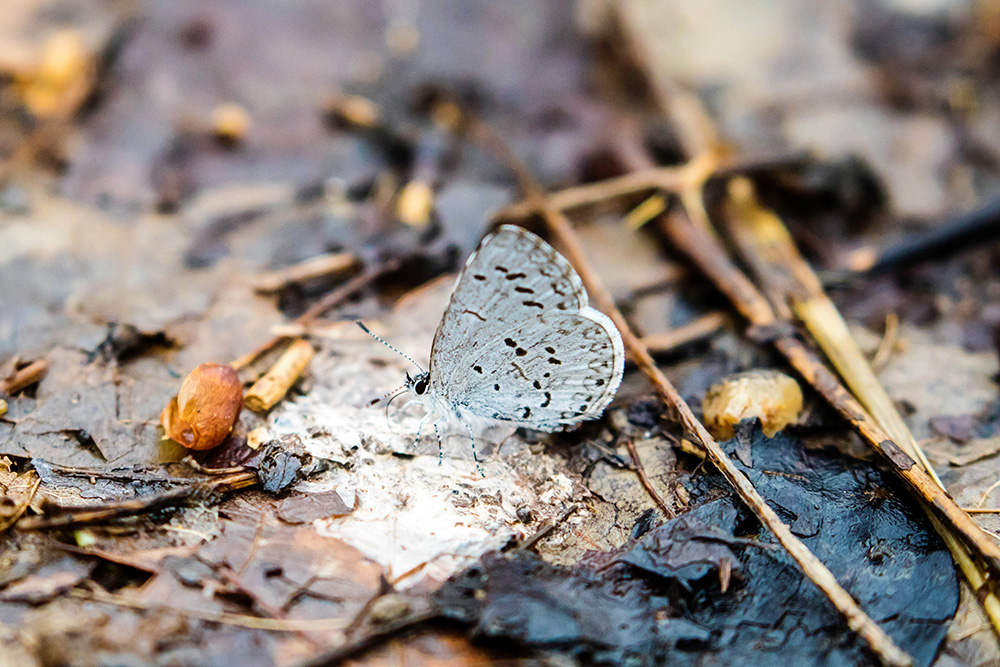
Our rainy winter has given rise to many striking fungi in the woods. I was already familiar with witch’s butter, a type of jelly fungus that latches onto other mushrooms feeding on decaying wood. But via the magic of iNaturalist, I was delighted to learn that our forest is also home to warlock’s butter, another (not-closely-related) jelly fungus. Several European folk legends are attached to these organisms: in one, the appearance of the fungus around a house’s doorframe meant the family had been cursed; in another, the fungus was said to be the remnants of late-night raids where witches would steal milk from a farmer’s cows.

I’ll never tire of haunting the first patches of cutleaf toothwort and spring beauty, waiting for a warm and sunny day to bring out the first native bees of the season. This year, they arrived on a February Monday: (clockwise from left) furrow bees, sweat bees, mining bees, and nomad bees.
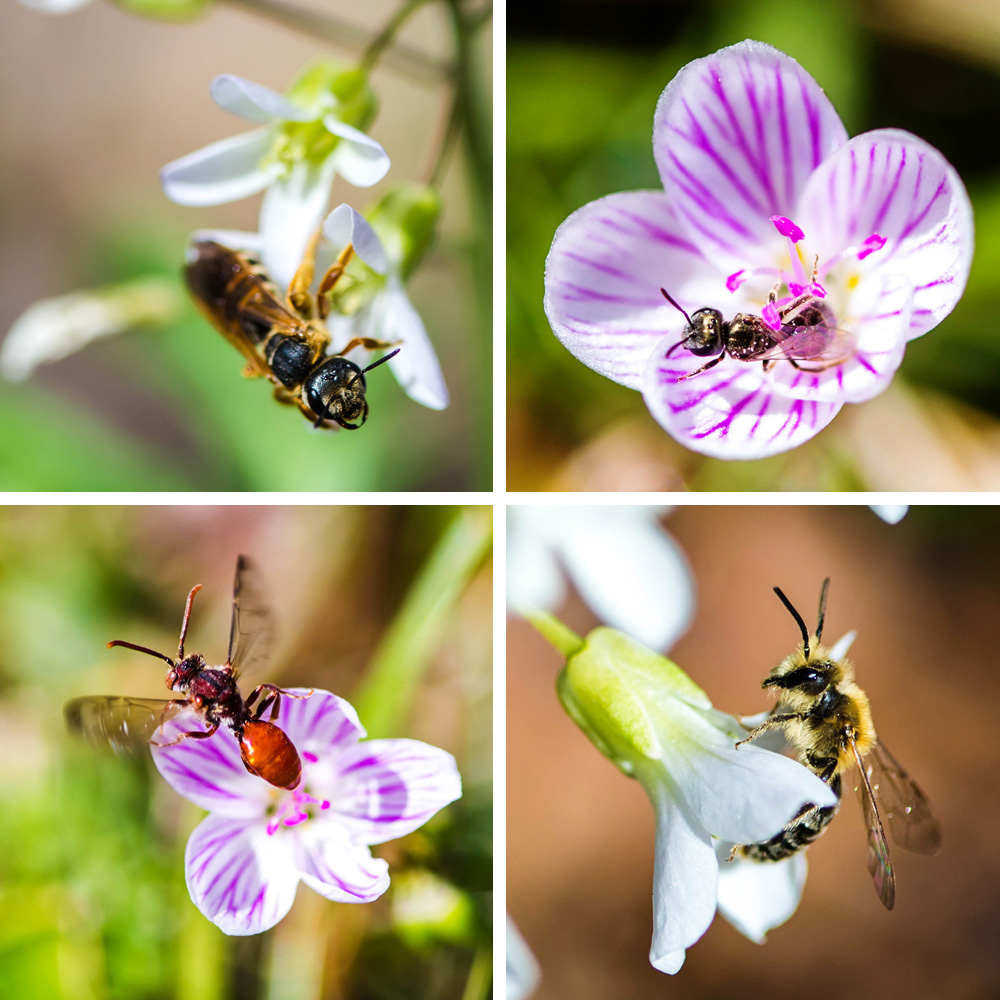
Contrary to their name, mayapples typically begin to pop up here in March, but this year they began to bloom in February. Because they’re so abundant in the forest, on a single day you can see a freshly-emerged individual looking like a verdant cone of soft-serve, and just down the trail there will be one with a split stem and a sturdy white bloom. My favorite mayapple phenomenon, though, is its status as a basking perch for seemingly every flying insect when the sun’s out. Mining bees are particularly fond of them, and sometimes a leaf can be quite coated with them. (These bees are very hard to ID to species, but if this one isn’t called the Wilford Brimley bee, I think it’s a real missed opportunity. I’d also accept “Sam Elliott bee.”)
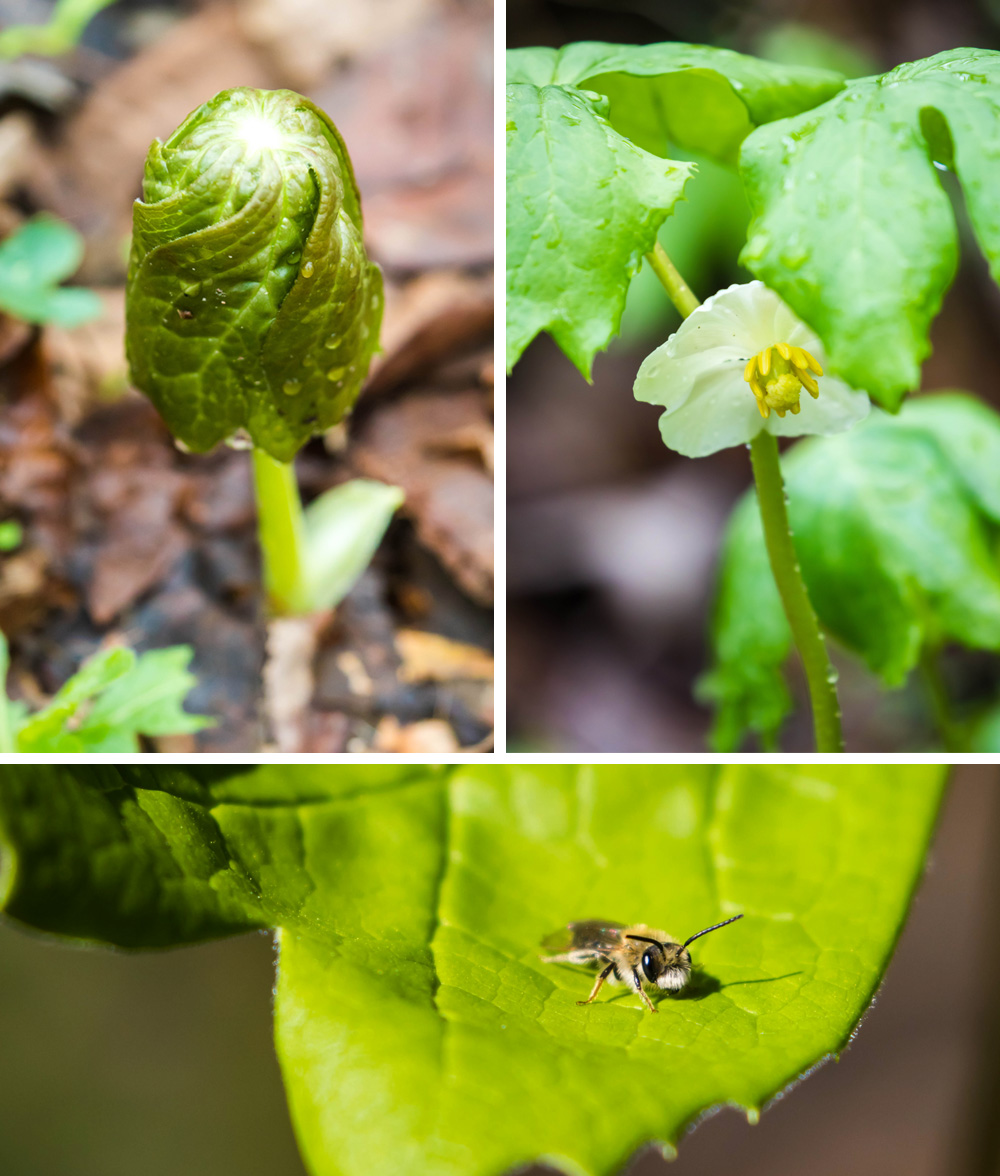
The calendar flipped to March and brought with it some gloomy days. It also brought the regular calling of barred owls, which I always try to follow but can rarely locate visually. In this case, though, there was a real racket of blue jay chatter in the same direction as the owl call, so I just followed the noise until I found the whole lot of them. The owl flushed into a couple of different trees, followed by its coterie of angry jays, until finally just deciding to let them get it out of their systems. This “mobbing” behavior is typical of smaller birds whose territory has been breached by a predator like an owl or a hawk. Eventually the jays gave up their dive-bombing and went back to their original location, leaving the owl to give me a good stare-down.
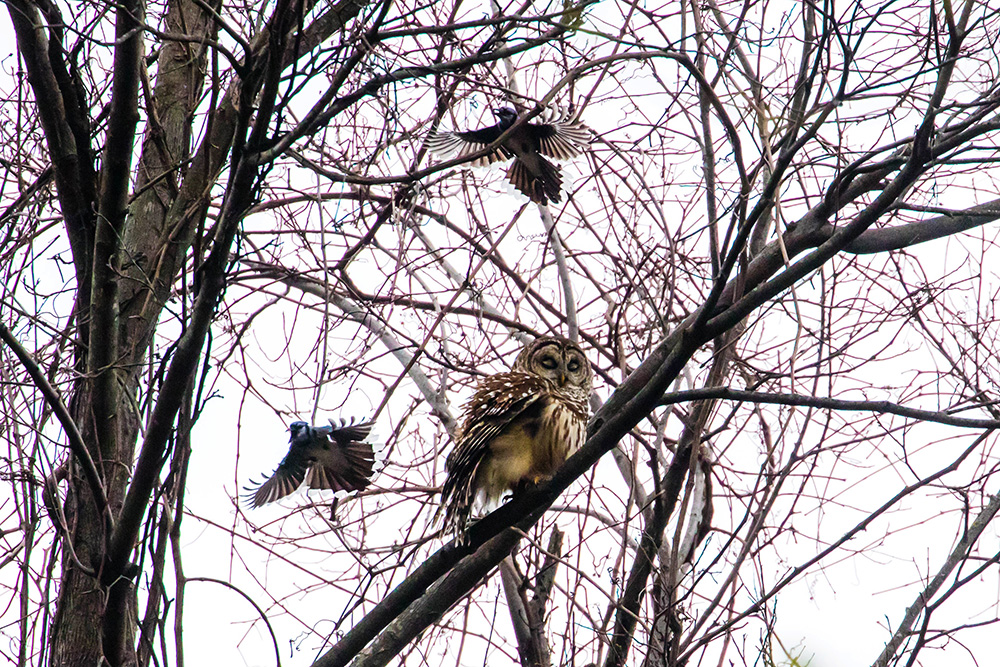
New leaves and seeds just seem to glow before their pastel shades mature into darker greens and browns. Here, a hickory begins to leaf out and a red maple pours forth its helicopter samaras, the outer coverings that shield the seeds inside.
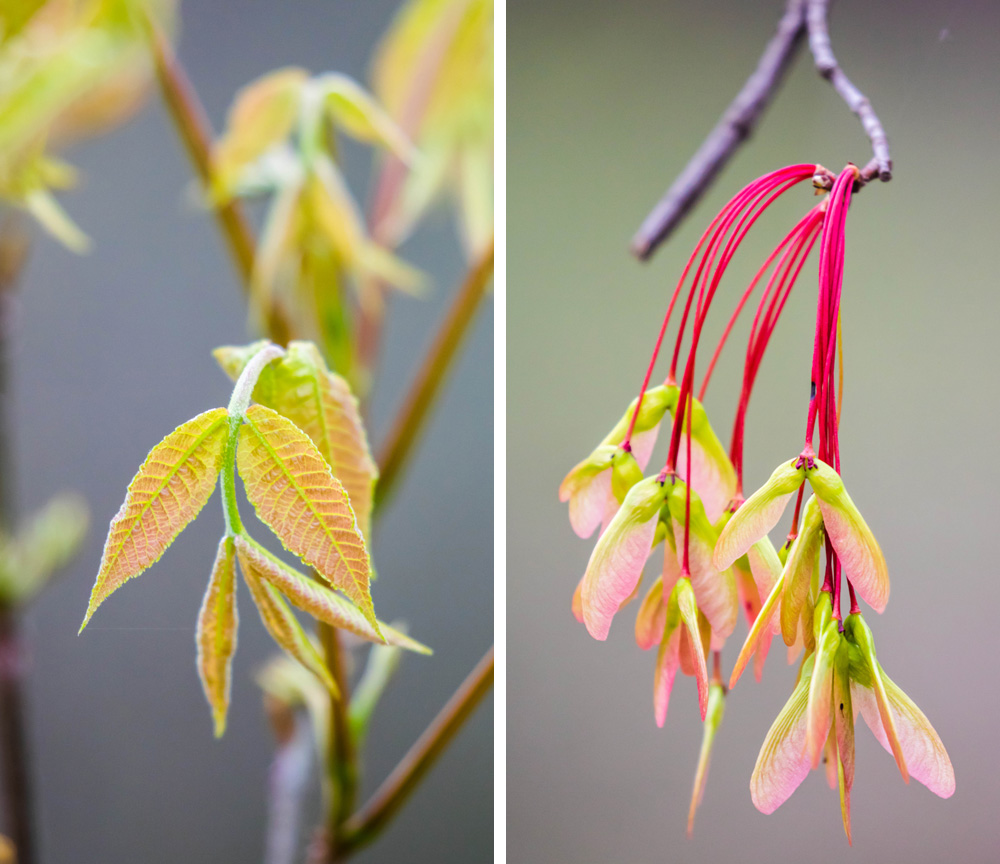
American robins seem to have domain over the forest’s spring soundscape, as they’re some of the earliest birds to begin singing. It’s a joy to watch their robust rusty feathers pop against the approaching greens of the forest floor after a winter of monochromatic scenes. Because we have such large numbers of robins, it’s fun to try to pick out interestingly-marked individuals. This snowy-white robin made it easy. About one in 30,000 robins has a genetic condition called leucism, which prevents pigment from reaching some feathers. This condition is seen in other types of birds, but robins exhibit it more often than most.
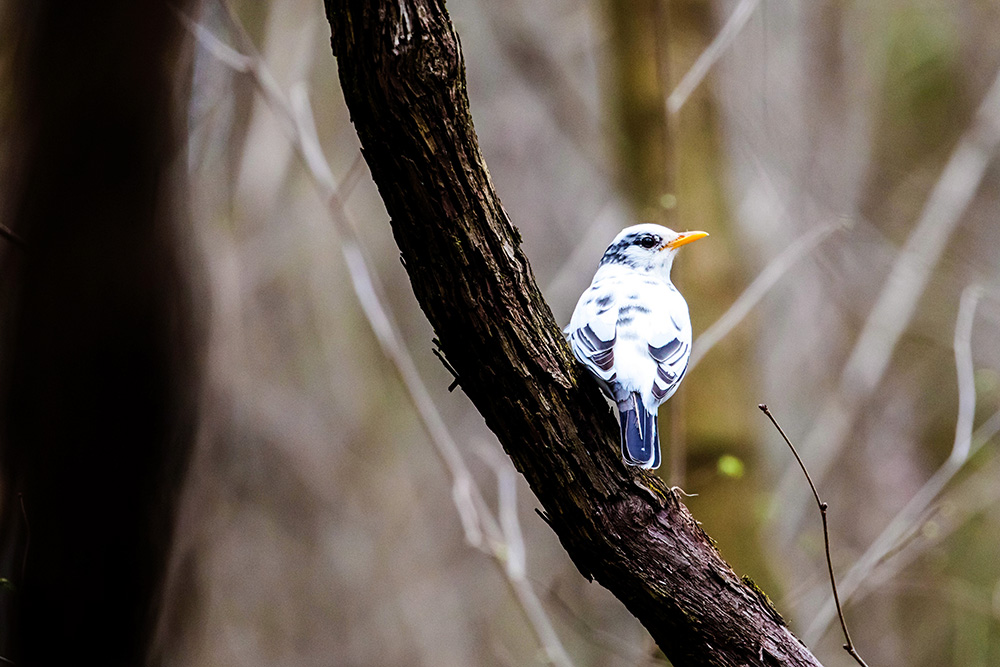
Snails are often hiding in leaf litter, but last week I was lucky enough to see an Eastern whitelip snail journeying across a downed tree trunk. A small twig provided an obstacle to its path, and watching its minute-long journey to twist past the stick without falling off the log got my heart rate up in a way I was surprised to associate with one of the world’s slowest creatures.
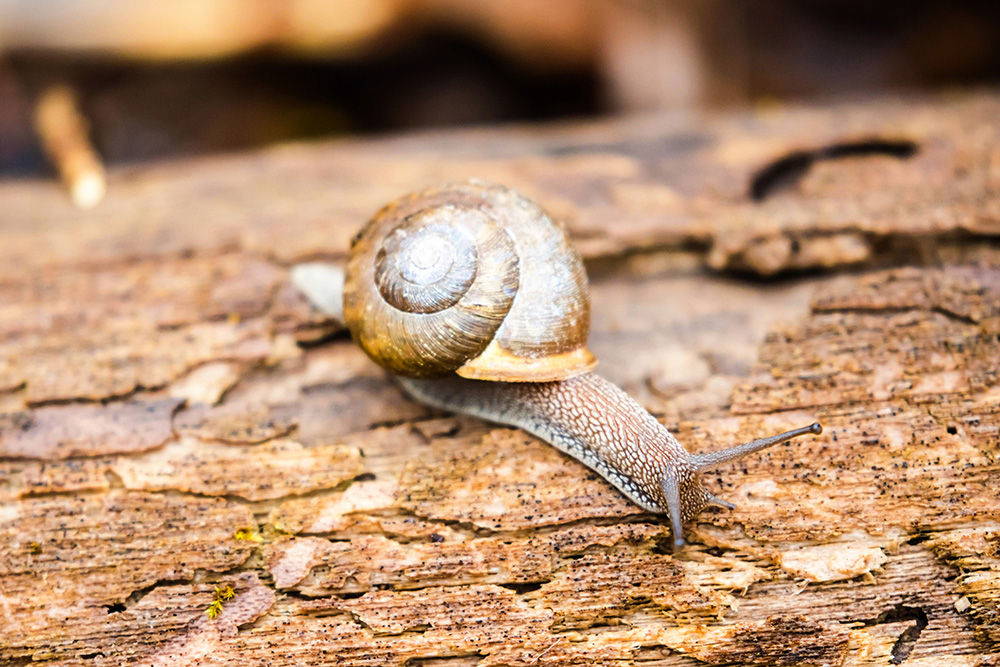
The next day, I glanced up between rain showers to see a pileated and a hairy woodpecker making their way up the same tree. (The pileated was displeased with this and threw his weight around until the hairy picked another tree to scout.)
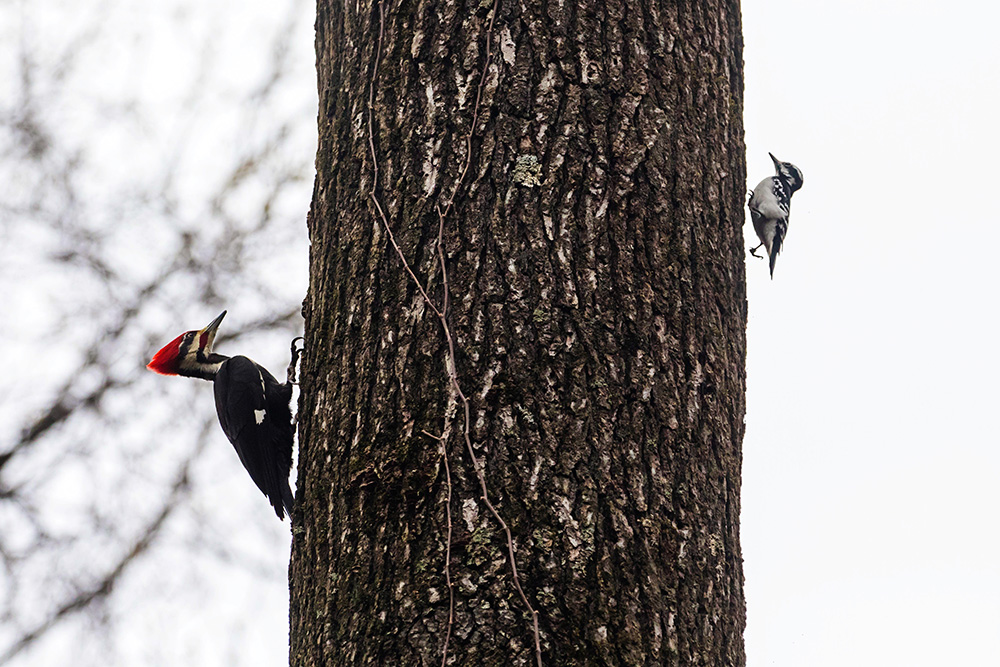
While the temperatures dipped toward the end of the week, Friday’s sunshine brought the insects back out. As I followed this unequal cellophane bee around its patch of toothwort, I noticed something interesting: it wasn’t entering through the flower’s opening and drinking nectar from there. Instead, it was “nectar robbing” by piercing a hole in the base of the flower and accessing the liquid directly. This enabled it to bypass the process of pollination that the flower needs to spread its genetic material and reproduce. (The nimble carpenter bee on the right is properly pollinating a Jacob’s ladder flower.) Cellophane bees do collect pollen to feed their young, so this one was employing a different strategy, for reasons I couldn’t guess.
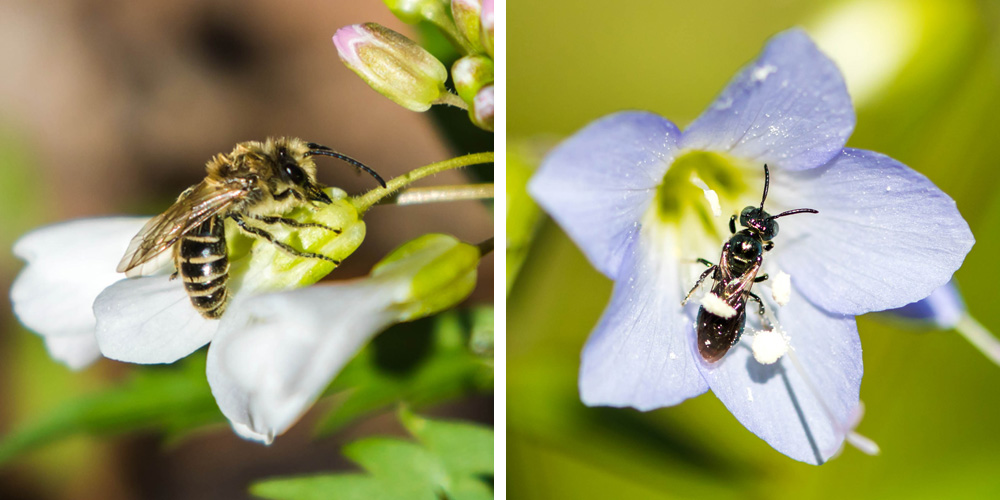
And finally, a reminder that 1) the Old Forest is in a city park, and 2) rodents really like digging through trash cans. I guess when you tell a squirrel to say cheese, sometimes you get exactly what you asked for.

